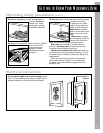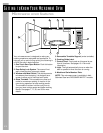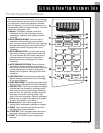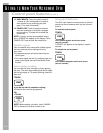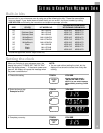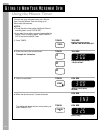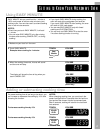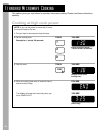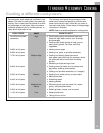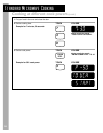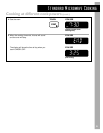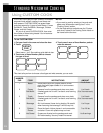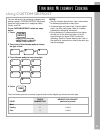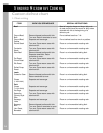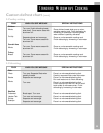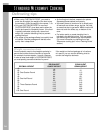
19
Cooking at different cook powers
For best results, some recipes call for different cook
powers. The lower the cook power, the slower the
cooking. Each number pad also stands for a differ-
ent percentage of cook power. Many microwave
cookbook recipes tell you by number, percent, or
name which cook power to use.
The following chart gives the percentage of cook
power each number pad stands for, and the cook
power name usually used. It also tells you when to
use each cook power. Follow recipe or food package
instructions if available.
NOTE: Refer to a reliable cookbook for cooking times.
Standard Microwave Cooking
NAME
High
Medium-High
Medium
Medium-Low,
Defrost
Low
COOK POWER
10=100% of full power
(automatic)
9=90% of full power
8=80% of full power
7=70% of full power
6=60% of full power
5=50% of full power
4=40% of full power
3=30% of full power
2=20% of full power
1=10% of full power
WHEN TO USE IT
• Quick heating many convenience foods and
foods with high water content, such as soups
and beverages
• Cooking small tender pieces of meat, ground
meat, poultry pieces, fish fillets, and most
vegetables
• Heating cream soups
• Heating rice, pasta, or stirrable casseroles
• Cooking and heating foods that need a
cook power lower than high (for example, whole
fish and meat loaf) or when food is cooking
too fast
• Reheating a single serving of food
• Cooking sensitive foods, such as cheese and
egg dishes, pudding, and custards
• Cooking non-stirrable casseroles (i.e., lasagna)
• Cooking ham, whole poultry, and pot roasts
• Melting chocolate
• Simmering stews
• Heating pastries
• Defrosting foods, such as bread, fish, meats,
poultry, and precooked foods
• Softening butter, cheese, and ice cream
• Keeping food warm
• Taking chill out of fruit



